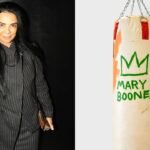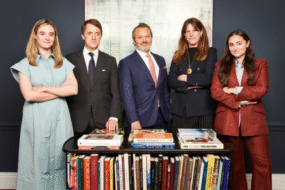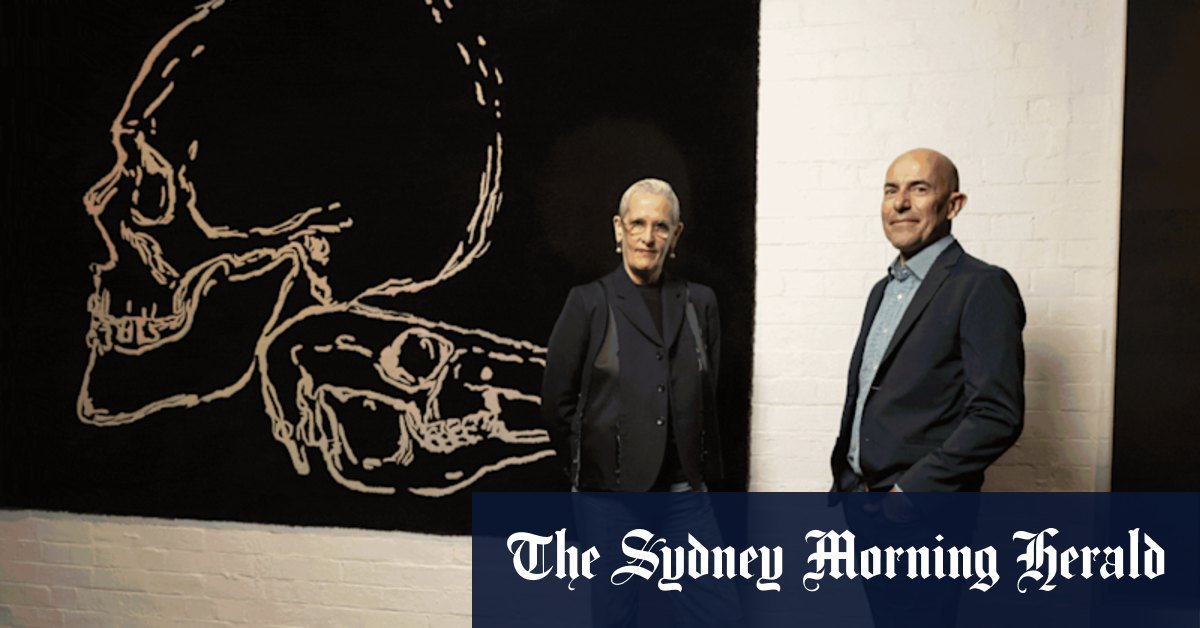
The great wealth transfer from Baby Boomers to their children is affecting not just real estate – the art world is witnessing generational handover and closely watching how Generation X and Millennials might change the face of art collecting.
Already, there are signs that the tightly held art collections of Baby Boomers – the generation of highest homeownership in Australia – are finding their way into auction houses as collections are downsized or estates sell inherited assets.
That has presented rare buying opportunities as works by the likes of Grace Cossington Smith, Howard Arkley and Brett Whiteley, purchased 40 or 50 years ago, come up for sale on the secondary art market.
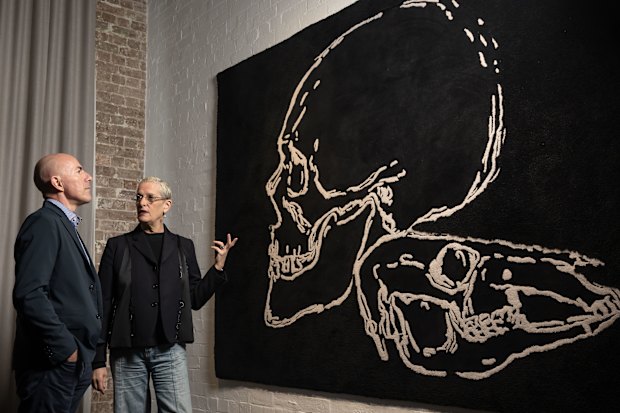
Art adviser Mark Hughes and art collector Sue Cato discuss an artwork by Shaun Gladwell.Credit: Wolter Peeters
The generational handover has longer-term implications for the art market as the tastes of Boomers give way to the aesthetics and concerns of digital natives.
Younger collectors tend to be harder hit by economic uncertainty compared with older generations, and that may reflect the dip in the emerging or ultra-contemporary art market, where non-fungible tokens are looking rather like yesterday’s fad.
No longer is it true that the gallery, the art dealer and the auction house are the only doors to enter to build an art collection. New models of online representation and agency representation are emerging to bypass galleries altogether.
Galleries, too, are in the midst of generational change with several closing their doors, and new arrivals like Ames Yavuz from Singapore, D’Lan Contemporary, Fine Arts, Sydney and 1301SW expanding their footprint.
Ahead of Sydney Contemporary, September 11-14, and at this pivotal moment, this masthead asked auctioneers, gallerists, arts consultants and collectors for their hot take on art collecting:
Where the art market is at right now
In a cost-of-living crisis, where global markets are “up, and down, and sideways”, says art adviser Mark Hughes, the Australian market looks comparably resilient and stable. The market for rising and emerging artists appears to have softened. Non-fungible tokens seem to have had their peak moment. “It’s probably on life support,” he says.
With three decades’ experience, Hughes is observing older and established collectors downsizing their collections, but predicts a “slow evolution” as digital natives – Millennials and Generation Z – pick up the threads of these collections.
The Australian market, notes Geoffrey Smith, chair of Smith & Singer Auction House, is its own microclimate, and not necessarily tied to trends and fashions of the global market, nor as vulnerable to the uncertainties of global conflicts. It’s also not at its financial high point: Australian painter John Russell painted side by side with Claude Monet. A Russell is worth $1 million, a Monet worth $30 million.
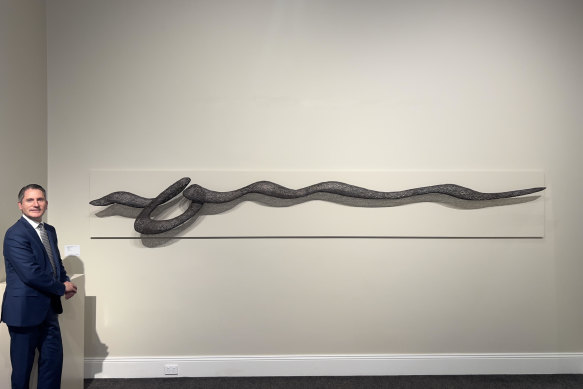
Geoffrey Smith, of auctioneers Smith and Singer, with Tide, by the late Sydney-based sculptor, Bronwyn Oliver.
Children of Baby Boomers will undoubtedly shape the secondary market’s future, says long-term secondary market art adviser, valuer and dealer, Annette Larkin.
“They’ve grown up with art around the house, and they have, by osmosis, picked up what they know from their parents and from there look at art of their contemporaries. They are not so much rebels, as they are using the knowledge of looking at their parents’ collections as a stepping stone or starting point,” Larkin says.
Art fairs or galleries?
Art fairs and galleries play very different roles, says collector Sue Cato, who is on the advisory board of Sydney Contemporary alongside Hughes. Art fairs are an opportunity for collectors, artists and even the gallerists to see a lot of art in a concentrated way. “The galleries bring their best work, so it’s a great way for collectors or people new to the arts to get a deep dive and work out what they are drawn to,” Cato says.
Galleries’ business model has evolved. “A decade ago, every Saturday was about a tour through as many galleries as you could get to,” Cato says. “This was punctuated by openings, talks and special events. The buyers came to the galleries. These days, it’s the galleries reaching out to collectors and people beginning their journey – most of it is done virtually.”
Loading
Hughes, who runs his own private consultancy and is involved with supporting the Museum of Contemporary Art and the Art Gallery of NSW, feels current generations are, sadly, less likely to visit galleries generally to see a rotation of artists.
“However, when it comes to the buying and representing, they remain important. I have been heartened on my gallery rounds to always find others there – it isn’t a wasteland,” he says.
“For internet-savvy unrepresented artists, introductions can be made online, but to sell art easily on a platform such as Instagram, an artist really needs to be well-organised logistically, financially, to make such a transaction successful.”
Female or male artists?
A shift is under way as collectors seek to rebalance their collections with under-recognised female and Indigenous artists. Retrospectives by state and national galleries are driving the rebalance. Art Basel’s latest collecting survey found the share of works by female artists in the collections of high-net-worth individuals rose to a ratio of 44 per cent, its highest level in seven years, up from 33 per cent in 2018.
“I don’t think it’s a competition, but the reality is women artists have been poorly represented across all the institutions, and they are starting to catch up,” Cato said. “The sensational shows of recent times have demonstrated the depth and breadth of practice.”
Luke Scholes, director of D’Lan Contemporary, said Australian First Nations women had been the driving force behind the primary market in Australia for some time, and this was only beginning to flow into the secondary market. A “power of work” was being done by collectors, curators and galleries to redress this.
Art lecturer and valuer, Leigh Capel, says collecting Australian female artists’ work is still a good bet in the short term, but collectors should be alert for the counter cycle.
Capel is a fan of pioneering post-war immigrant artists, who brought significant innovation and influence to abstraction in Australia – influential post-war figurative artists such as William Dobell, Charles Blackman, Ian Fairweather and the group of avant-garde artists associated with the Heide Circle.
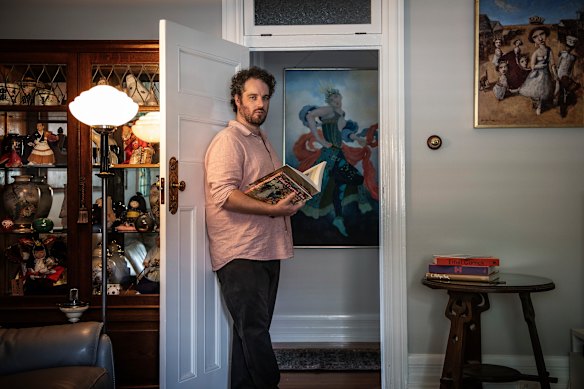
Art lecturer and valuer Leigh Capel says collecting Australian female artists’ work is still a good bet in the short term.Credit: Steven Siewert
Furthermore, he says, the current, sustained popularity of mid-century and industrial interiors among a young, social media-inspired audience will surely transfer focus towards this complementary art.
Indigenous Art
One of Australia’s most celebrated artists, Emily Kam Kngwarray, is on at the Tate, and the Art Gallery of NSW has a landmark exhibition featuring artists from the Yirrkala Arts Centre.
While the market for paintings by Kngwarray are “quite possibly at an all-time high”, recognition for and interest in Australian First Nations art more broadly is in its infancy, says Scholes.
“We’re continuing to see Emily’s market expand to reach international collectors in an increasing number of collecting markets, and so it is only natural for other artists in this collecting genre to follow,” Scholes says. “There is also the growing hunger and awareness of First Nations culture, and a desire from collectors to learn more about the art and where it comes from.”
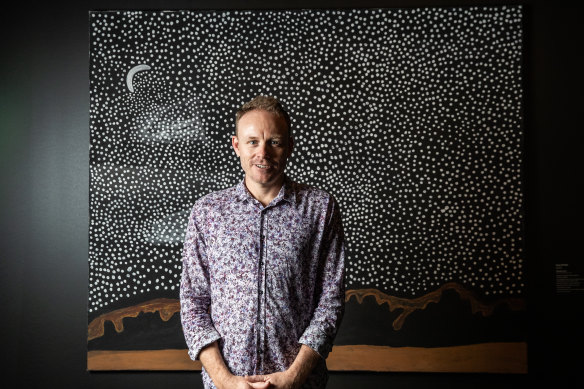
Luke Scholes, when he was curator of Aboriginal art and material culture at the Museum and Art Gallery of Northern Territory. The artwork is Garnkiny by Rusty Peters.Credit: Helen Orr
Worries about ensuring fair treatment of artists, respecting cultural protocols and authenticity can be assuaged by buying directly from artists via art centres or reputable galleries, understanding payment structures, and verifying the origin and artist’s connection to the work.
For collectors, having clear provenance provides assurance of authenticity that the artwork has not been misattributed or fraudulently produced, Scholes says. Documented provenance protects both the collector and the artist by offering a verified lineage of the work’s creation and sales history. And a word of caution, most major auction houses will not include works for sale if there is anything untoward or unknown about a work’s provenance.
Quality is the key
There is no substitute for quality, Smith says. A sale of Important Australia Art held in Sydney on Tuesday achieved stellar results including an auction record for a Howard Arkley, held in single private ownership since its purchase in 1988.
“Jane Austen never goes out of fashion. William Shakespeare never goes out of fashion. The same is for art. A lot of people feel compelled to collect what is being created now but that is often what becomes dated because you are just collecting something of the moment. It’s like a shoe, a style, a trend, whereas great art, like great literature or music, is something that reflects not only the time it was created but transcends through time,” Smith says.
The generational transfer is not from modern to contemporary art necessarily but more historic, notes Hughes. “People in their 60s are more likely to have bought [Rosalie] Gascoigne, [Bill] Henson, and so on earlier and these artists remain of interest to younger generations. They are still contemporary in essence,” he says.
It’s the originators, not the imitators, who make the art history books, Larkin notes. “There are only four or five artists from any generation who define that generation, and it is the same for the art of the ’80s and ’90s, and this period as well. That’s if you are looking for a long-term investment. If not, buy what you love.”
‘Buy art that is timeless, art that you can’t place in a box, and will seem as fresh today as it did decades ago.’
Leigh Capel
Capel suggests homing in on contemporaries or collaborators of the handful of artists picked up and promoted internationally. “You will find many are just as decorated, influential, important and of quality as those you have heard of. Buy art that is timeless, art that you can’t place in a box, and will seem as fresh today as it did decades ago, or in a few decades’ time.”
The secondary market is supported by years of filtered data, he says, while the primary market is a crystal ball – unpredictable, and very likely to end in tears.
Getting started
Cato’s first purchase was a four-panel masterwork by Guan Wei, before his work travelled to museums and private collections around the world.
“I arrived on the last day of the show, and there wasn’t a single work sold, and I didn’t know what I didn’t know. I walked in and fell in love,” she says.
Loading
Cato has since developed an eye for minimalist abstraction.
The moment she acquires a work, it ceases to have monetary value: “I don’t buy for price appreciation, it’s not my motivator.”
Smith recommends visiting as many galleries as possible. “Be objective, how does the work make you feel? Is it by a leader in the art form or a follower? Is the voice that created it original or channelling someone else’s ideas or a reinterpretation of an artist or practice from 40 or 50 years ago?”
Larkin is all for self-education, harking back to the pandemic years when art, music and literature sustained society through bleak times. Australians needed to make time for culture in their life.
“Going into buying without researching, you may find the first thing you buy that is easy to understand, maybe the first thing you get bored with; it will not keep your attention long enough, and will be the first thing you sell.” After decades in the business, Larkin does not buy any work she has not seen first in the flesh.
Scholes encourages buyers interested in the Australian First Nations art market to understand the importance of provenance. Visiting the places where the art comes from provides some important context to the vital role Aboriginal art centres play in the lives of artists in remote areas of Australia.
Not every work by a renowned artist is great art. This is where a good art consultant comes in. The trick, says Cato, is to ensure you engage with the consultant, so subsequent purchases reflect your own aesthetics and not that of your adviser.
Loading
In case of buyer’s regret, leading galleries such as D’Lan are willing to buy back works. “We only put to market artworks that we actually want back.”
All collectors have stories of the one buy that got away. Cato kicks herself still for not purchasing a particular Rosemary Laing image from her first series of the “flying brides”. She didn’t listen to her own gut. It’s niggled at her for two decades.
Sydney Contemporary at Carrriageworks runs from September 11 to 14.
Start the day with a summary of the day’s most important and interesting stories, analysis and insights. Sign up for our Morning Edition newsletter.

